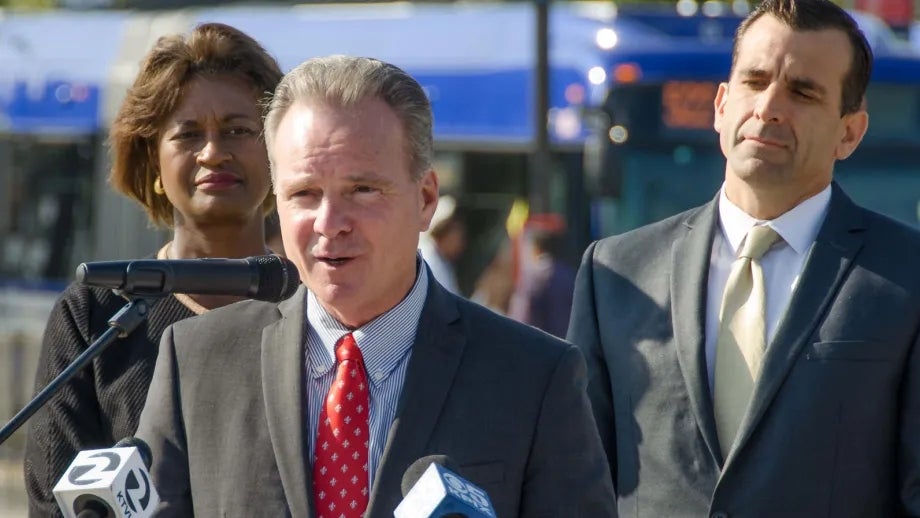Deficient, Congested Roadways Costing State’s Drivers Billions
Roads and bridges that are deficient, congested or lack desirable safety features cost California motorists a total of $53.6 billion statewide annually — $2,471 to $2,824 per driver in the Bay Area — due to higher vehicle operating costs, traffic crashes and congestion-related delays, according to a new report released today at press events in San Jose and Oakland by TRIP, a Washington DC-based national transportation organization.
According to TRIP, increased investment in transportation improvements at the local, state and federal levels could relieve traffic congestion, improve road, bridge and transit conditions, boost safety, and support long-term economic growth in California. The TRIP report, “California Transportation by the Numbers: Meeting the State’s Need for Safe, Smooth and Efficient Mobility,” finds that throughout California, 37 percent of major locally and state-maintained roads are in poor condition. One quarter of California’s bridges are structurally deficient or functionally obsolete. The state’s major urban roads are becoming increasingly congested, with drivers wasting significant amounts of time and fuel each year. And, more than 14,000 people were killed in crashes on California’s roads from 2010 to 2014.
Driving on deficient roads costs each San Jose area driver $2,471 per year in the form of extra vehicle operating costs (VOC) as a result of driving on roads in need of repair, lost time and fuel due to congestion-related delays, and the costs of traffic crashes in which roadway features likely were a contributing factor. For drivers in the San Francisco-Oakland area, the cost rises to $2,824. The TRIP report calculates the cost to motorists of insufficient roads in the Los Angeles-Long Beach-Santa Ana, Sacramento, San Diego, San Francisco-Oakland and San Jose urban areas. A breakdown of the costs per motorist in each area along with a statewide total is below.
| VOC | Safety | Congestion | Total | |
| Los Angeles-Long Beach-Santa Ana | $892 | $223 | $1,711 | $2,826 |
| Sacramento | $638 | $674 | $958 | $2,270 |
| San Diego | $722 | $249 | $887 | $1,858 |
| San Francisco-Oakland | $978 | $171 | $1,675 | $2,824 |
| San Jose | $863 | $186 | $1,422 | $2,471 |
| STATEWIDE TOTAL | $18.3 Billion | $7.3 Billion | $28 Billion | $53.6 Billion |
The TRIP report finds that 79 percent of major roads in the San Jose urban area are in poor or mediocre condition, costing the average motorist an additional $863 each year in extra vehicle operating costs (Labeled as VOC in the table), including accelerated vehicle depreciation, additional repair costs, and increased fuel consumption and tire wear.
"The TRIP report confirms what everyone in California knows: The transportation system in this state is in bad shape,” said Will Kempton, executive director of Transportation California. “It is past time for our elected officials in Sacramento to step up and deal with this problem."
Traffic congestion in the Bay Area is worsening, causing 67 annual hours of delay for the average motorist in San Jose and costing each driver $1,422 annually in lost time and wasted fuel. In the San Francisco-Oakland area, the average motorist experiences 78 hours of delay a year, at a cost of $1,675 per driver.
“Anyone who drives in the San Francisco Bay Area knows that we pay a price for commuting to work, school and other necessary trips,” said Santa Clara County Board of Supervisors President Dave Cortese, who also serves as chair of MTC. “This report tells us exactly how much we pay and why repairing the bridges and roads in our local transportation system is so important. We need to increase our investment for the safety and wellbeing of our residents.”
A total of 25 percent of California’s bridges show significant deterioration or do not meet modern design standards, while 8 percent of California’s bridges are structurally deficient, with significant deterioration to the bridge deck, supports or other major components. An additional 17 percent of the state’s bridges are functionally obsolete, which means they no longer meet modern design standards, often because of narrow lanes, inadequate clearances or poor alignment. In the San Jose urban area, 8 percent of bridges are structurally deficient and 17 percent are functionally obsolete. In the San Francisco-Oakland area, the respective numbers are 10 percent deficient and 24 percent functionally obsolete.
Traffic crashes in California claimed the lives of 14,437 people between 2010 and 2014. California’s overall traffic fatality rate of 0.92 fatalities per 100 million vehicle miles of travel is lower than the national average of 1.08. The fatality rate on California’s rural non-Interstate roads was 2.72 fatalities per 100 million vehicle miles of travel in 2014, nearly four times higher than the 0.70 fatality rate on all other roads and highways in the state.
The efficiency and condition of California’s transportation system, particularly its highways, is critical to the health of the state’s economy. Annually, $2.8 trillion in goods are shipped to and from sites in California, mostly by truck. Sixty-eight percent of the goods shipped annually to and from sites in California are carried by trucks and another 19 percent are carried by courier services or multiple mode deliveries, which include trucking.
“These conditions are only going to get worse if greater funding is not made available at the state and local levels,” said Will Wilkins, TRIP’s executive director. “Without adequate investment, California’s transportation system will become increasingly deteriorated and congested, hampering economic growth and the quality of life of the state’s residents.”


Submit your comment
In order to receive a reply to your comment, please provide an email address.